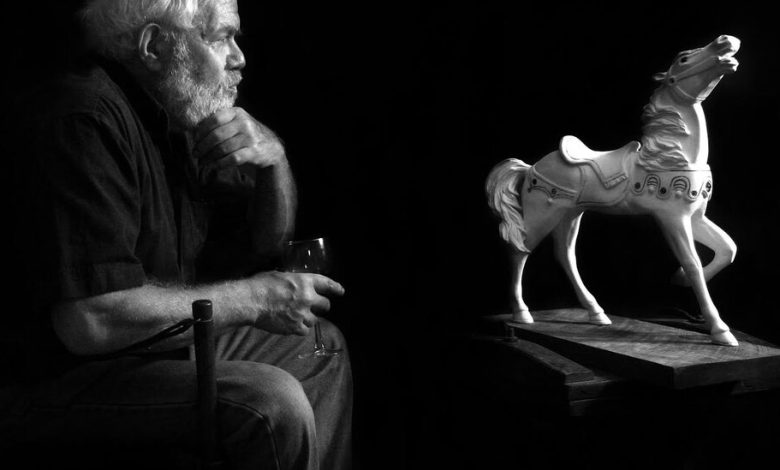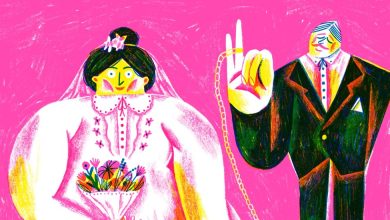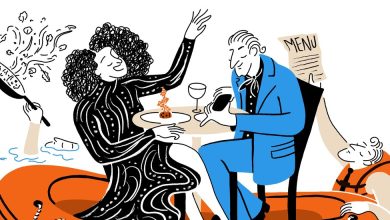Gerry Holzman, Master Carver of a New York Merry-Go-Round, Dies at 90

Gerry Holzman, a master woodcarver who conceived, and toiled for 20 years to build, a merry-go-round that celebrated New York State with riding animals like a beaver, a cow and a pig, as well as portrait panels of citizens like Susan B. Anthony, Grandma Moses and Theodore Roosevelt, died on Dec. 8 at his home in Brunswick, Maine. He was 90.
The cause was heart failure, his daughter Nancy Holzman said.
A former high school teacher, Mr. Holzman was the head carver and fund-raiser of the Empire State Carousel, a whimsical and educational reminder of state fairs and carnivals past. The carousel, which is 36 feet wide and 23 feet high, was built with the help of about 1,000 volunteer carvers, woodworkers, painters and quilters. It is a permanent and popular attraction at the Farmers’ Museum in Cooperstown, N.Y., where it opened in 2006.
“I’m a real history buff,” Mr. Holzman told The New York Times in 1999, when the carousel was by his estimation “97 to 98 percent done.” “I’m one of these people who truly love New York. This is my whole life.”
The carousel is the signature creation of Mr. Holzman’s late-blooming woodworking career, during which he also restored antique carousel art and carved walking sticks, decorative moldings, signs, plaques, human and animal figures, and religious works.
His clients included the Cunard cruise line, Disney World and the South Street Seaport.
There were once as many as 7,000 hand-carved carousels in the United States. But only about 225 currently remain, according to the National Carousel Association.
“This is very much a product of my generation passing on its heritage to the next generation,” Mr. Holzman told The Times.
The handmade animals, each with a saddle, represent indigenous New York fauna. There’s Bucky Beaver, a naturally industrious woodworker, who holds a carver’s mallet and chisel in his paws, and Reggie Raccoon, who totes a garbage can. Percy Pig carries a bag of pennies in one foot to denote that his carving was sponsored with pennies from children, and Freddie de Frogge wears a bow tie, argyle socks and white bucks — all items Mr. Holzman wore when he was in college.
“When we design an animal’s trappings — like its saddle and accessories — we aim for a bit of fantasy and wit, working in details that are fun to discover,” Mr. Holzman told Newsday in 2003.
In addition to 21 portrait panels, the carousel includes carved folklore panels that depict state regions like the Adirondacks, the Catskills and Long Island, as well as a pipe organ with a three-foot-tall carving of the bandleader and composer John Philip Sousa, whose arms move in time to songs like “The Sidewalks of New York” and “Shuffle Off to Buffalo.”
Gerald Holzman was born on June 8, 1933, in the Bronx and lived with his family in Brooklyn and Queens before they moved to Amenia, N.Y., in Dutchess County, where he attended elementary and high school. His parents, Solomon and Hazel (Lopinsky) Holzman, owned several retail businesses, including clothing and food stores.
Gerry was more than two decades away from becoming a professional woodcarver when he graduated from the State University of New York at Albany (now the University at Albany) in 1954 with a bachelor’s degree in teaching. After being drafted into the Army, he served for two years as a radio operator in posts that included Ethiopia and Eritrea. When he returned to the United States, he received a master’s degree in humanities, also at Albany, in 1959.
He taught English, social studies and humanities for nearly 30 years at high schools on Long Island. In 1972, he was dismissed from Hauppauge High School, where he was chairman of the social studies department, over complaints about several issues. (One complaint concerned a seventh-grade teacher who had shown a film strip about overpopulation that included two frames dealing with birth control; he said he had told the teacher that it was inappropriate to show the strip to students.)
From there he moved to Herricks High School, in New Hyde Park, where he taught social studies but also spent one semester as an artist in residence, carving a four-foot statue of Columbia, a feminine personification of the United States. He retired in 1987.
He had begun carving in 1969, when his father asked him what he wanted for Christmas. He asked for an X-Acto carving set, which he had seen in a newspaper advertisement, he told The Times in 1981.
He started as a hobbyist, then began a side business in 1978 that grew while he continued to work as a teacher. To improve his woodworking skills, he took lessons between 1976 and 1982 with Gino Masero, a master carver in Sussex, England.
The idea for the New York carousel came from a failed venture in Alaska. Mr. Holzman had answered an advertisement in 1983 for carvers to work on a carousel that would honor the state’s culture and history.
But when its financing fell through, Mr. Holzman had an epiphany. As he watched a skunk from the back porch of his summer house in Middleburgh, N.Y., he thought about how he could create a carving of it out of basswood; then he mused about making a carousel skunk on an English saddle, and then about carving other carousel animals.
“And then, the explosion,” he wrote in his memoir, “Wanderings of a Wayward Woodcarver” (2022). “I know of no other word to describe it. A New York State carousel! I don’t have to go to Alaska — no Great Alaskan Carousel. I’ll make an Empire State CAROUSEL!”
Work started in 1983 and was supposed to take a few years. But it was a slog. Financing dribbled in from local businesses, government grants, individuals and children.
“He was very persistent, but sometimes he was very upset that it wouldn’t get done,” his wife, Arlene (Davidson) Holzman, said in a phone interview.
When the carousel was finally finished in 2003, it found a home, but for only three weeks, at the Holtsville Ecology Center and Animal Preserve in the town of Brookhaven, on Long Island. When the town shut down the building where it was housed because it was not up to code, Mr. Holzman looked for a new home for the merry-go-round.
Garet D. Livermore, a former vice president of the Farmers’ Museum, said by phone that he had been asked to bring a carousel to Cooperstown, “which led me on a long strange trip with many folks, but I eventually hooked up with Gerry.”
Jane Forbes Clark, whose influential family built the museum and the Baseball Hall of Fame, among other institutions in Cooperstown, agreed to build a pavilion at the Farmers’ Museum to house the carousel, which Mr. Holzman donated in 2005.
In addition to his wife and his daughter Nancy, Mr. Holzman is survived by two other daughters, Jill Irving and Susan Gatti; a brother, Larry; and six grandchildren.
In 2009, Mr. Holzman was invited to speak to the wives of Baseball Hall of Famers who had gathered in Cooperstown for the annual induction weekend. He talked about the connection between carousels and baseball.
“Do you remember your first ride?” he said. “Who brought you? Think about it for a moment. It was probably your father or your mother, a brother or a sister or a favorite uncle or aunt. Riding a carousel, like watching a baseball game, gives us all a chance to be young again.”





